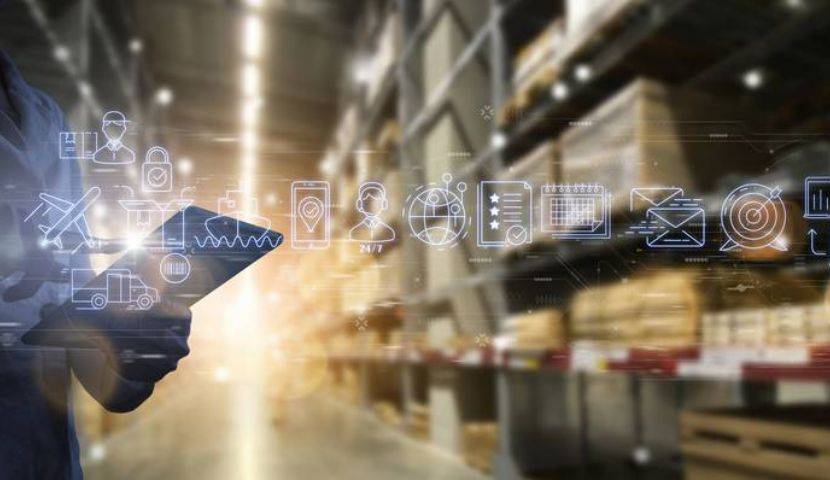Over the past several years, the importance of supply chain resilience has been moved even more to the forefront. Even with the worst of the pandemic behind us, companies still face supply chain management challenges including shifting customer demands, natural disasters and political tensions. To hold on to their competitive advantage, more businesses turn to digital technologies to enhance supply chain resilience and provide the ability to quickly adapt to threats to the global supply chain.
This post will explore digital supply chain management and how advanced digital technologies like artificial intelligence (AI), the Internet of Things (IoT) and blockchain help defend against unexpected changes in the supply chain.

Supply Chain Best Practices
Download this eBook to learn 15 supply chain management best practices that can help your company succeed and keep a competitive advantage.
Understanding Supply Chain Resilience
What is supply chain resilience? Resilient supply chains can prepare for, respond to and recover from disruption. There are 3 characteristics of supply chain resilience: flexibility to adjust quickly, adaptability to meet new situations, and visibility to provide access to data analytics for informed decision making.
The challenges of the pandemic exposed vulnerabilities in global supply chains resulting in delays, shortages and financial impacts. However, companies with digital supply chain management were better able to manage these issues.
Overview of Technologies in Digital Supply Chain Management
Digital supply chains provide tools to improve operational efficiency, adaptability and visibility. Let’s look at some digital technologies revolutionizing modern supply chain management.
Internet of Things (IoT)
Supply chains generate information related to inventory levels, shipment and transportation data, or cost and performance data. The Internet of Things uses connected devices with sensors to collect all that data, making it available to businesses for better decision making, improved inventory management, and enhanced logistics processes.
Artificial Intelligence (AI)
Artificial Intelligence and machine learning are used to analyze data and key in on patterns. In supply chains, AI is used to improve demand planning, assess and manage risks, and optimize logistics. In warehouse operations, AI can analyze data such as inventory levels and order patterns to optimize the use of materials, labor and equipment., maximizing productivity.
Blockchain
Blockchain technology is a way to secure transaction records. In a digital supply chain, blockchain allows stakeholders to verify product authenticity, reducing the risk of recalls and counterfeiting.

Risk Mitigation Through Digital Tools
A main benefit to digital supply chain management is the ability to identify and manage risks from disruptions by adding visibility, facilitating data-driven decision making and establishing greater overall resilience. The data gleaned from AI or IoT, for example, can provide real time data and insights into supplier performance, movement of products, and potential disruptions to the entire chain like delays, damage or theft. With this information, companies can develop smarter logistics planning to address risk.
IoT devices let businesses monitor inventory levels, track product shipments and log conditions like temperature in real-time. This can help reduce risks from product spoilage, theft or damage. Plus, the data gathered can provide an opportunity to make adjustments on the fly to mitigate the effects of these issues. In addition, AI-powered predictive analytics can give insight into potential disruptions like fluctuations in demand or supplier delays, so businesses can address these challenges before they escalate.
Visibility and transparency are also key to mitigating supply chain disruptions. Blockchain provides a secure way to track transactions and confirm the authenticity of products through the entire supply chain process. A recent article explains, “blockchain can transform procurement processes by automating supplier verification and enhancing compliance. Smart contracts can automate payments, trigger orders when stock levels are low, and enforce compliance with regulations and quality standards. This reduces human errors, streamlines procurement, and minimizes the potential for fraud.”
Finally, cloud-based platforms—like ERP systems—provide a centralized solution for data access, collaboration among supply chain managers, and real time visibility to updates. This ensures all stakeholders have access to accurate information and can respond to changing conditions. Plus, this technology automates routine tasks like manual input of data, minimizing human error and boosting efficiency.
Building Collaborative Ecosystems
A critical piece of building a resilient supply chain is collaboration. Enterprise Resource Planning (ERP) systems are one of the main digital technologies that help facilitate this goal by integrating business functions and enabling communications across business operations and departments.
Here’s how ERP fosters collaboration:
Centralized Data Access
ERP systems are a repository for information across departments, bringing data from inventory, procurement, production and sales into one platform. This centralized solution enables everyone in the supply chain, including suppliers, manufacturers and distributors to have access to current data. Key personnel can then collaborate effectively working from a single source of truth, reducing errors and miscommunication, along with inventory challenges like stockouts and overstocks.
In addition to making communication within a business easier, many ERP systems have modules that allow direct communication with stakeholders that are outside the company too—like suppliers and customers. These portals allow access to data such as order and payment status, inventory levels, and delivery times. As a result, suppliers can respond quickly to product demand, while customers can easily track their orders in real-time. Because all parties can view up to date information, challenges like stockouts and overstocks can be avoided, while improving customer service and satisfaction.
Improved Communication
Many ERP systems include communication tools like automated alerts which notify teams of order status, delays or production schedule changes. These instant messages can help streamline operations and enhance coordination to address issues as they happen.
Collaborative Planning and Forecasting
Modern ERP system help supply chain professionals with demand forecasting by aligning cross functional teams like sales, marketing and finance teams, and providing advanced analytics insights into demand trends. The system can also examine “what if” scenarios to predict outcomes based on different variables. Once a strategy is determined, the ERP can automatically create replenishment orders, update production schedules and procurement plans based on those forecasts. This ensures that the supply chain operates without delays or overstocks.
Ready to start your digital transformation journey?
Click the button below to request your free discovery call.

Challenges and Digital Supply Chain Risks
While digital supply chains offer many advantages over traditional supply chains, businesses must keep in mind that there are some potential challenges to keep in mind. To address and overcome these challenges, organizations need to develop a comprehensive strategy that includes objectives, stakeholder communication plans and training programs to address complex digital supply chain transformation.
Challenges of Implementing Digital Technologies
When implementing digital technology solutions, implementation can prove complex and require significant financial investment. Infrastructure, software and training are needed to ensure successful adoption. In addition, change management needs to be a top priority to head off resistance to change from employees which can hinder progress.
Importance of Cybersecurity
A digital supply chain network can increase cyber threats. Supply chain networks often include a range of third party providers and vendors for transformation management, manufacturing, or warehousing. Each vendor presents a potential vulnerability in the chain, effecting not just the vendor but also every company connected to that vendor in the supply chain. Companies must prioritize protection of sensitive data by implementing strong cybersecurity measures and monitoring for vulnerabilities.

Conclusion
Digital technology plays a key role in enhancing a company’s supply chain management. Through improvements in data analytics, responsiveness to potential challenges, and collaboration between key stakeholders, these digital tools help organizations address demand planning, disruptions in essential supplies, and customer satisfaction in a constantly changing marketplace.
The benefits are clear: investing in digital supply chain management isn’t just about moving forward with the latest trends; it’s about creating resilience to support business objectives. Through leveraging technology like AI, IoT and cloud-based ERP platforms, your company can gain visibility, improve decision making and effectively respond to disruptions. This agility drives efficiency in operations and also provides opportunities to maintain your competitive edge.
To get started on your digital supply chain management journey, reach out to the Ultra experts for ways to implement digital solutions in your own supply chain. Let’s talk about how digital transformation is an opportunity to future-proof your operations and prepare for whatever comes. Schedule your free discovery call today.
Table of Contents
More ERP material...
AI in Food and Beverage Manufacturing
Discover how AI is revolutionizing food and beverage manufacturing, enhancing quality, reducing…
How ERP for Quality Control Eliminates Manual Documentation Chaos
This post will examine why managing quality records outside of an ERP…
Assessing Your AI Maturity
This article breaks down how businesses can measure their AI maturity to…



